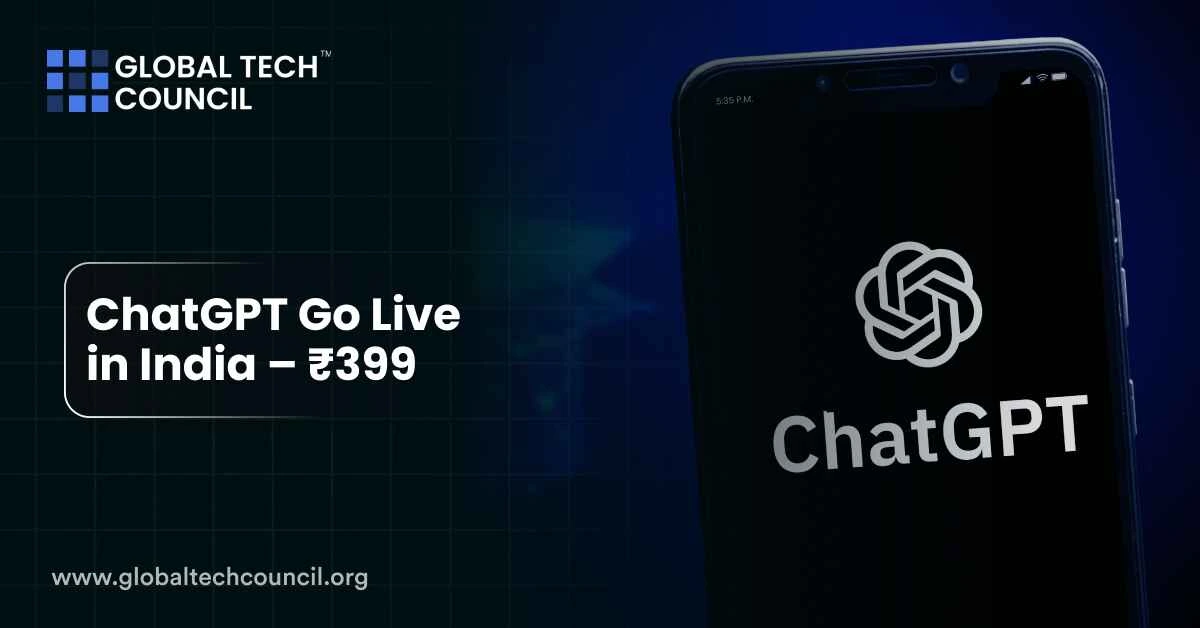
OpenAI has launched ChatGPT Go in India for ₹399 per month, a new subscription tier designed to give more power than the free version at an affordable cost. With UPI payment support, millions of users can now subscribe without the need for credit cards. In simple terms, ChatGPT Go makes advanced AI accessible for everyday use in India.
For professionals looking to understand how breakthrough technologies shape local markets, a Deep Tech Certification can help you build expertise in the innovations that drive launches like this.
What ChatGPT Go Includes
ChatGPT Go is placed between the free plan and higher tiers such as Plus and Pro. It comes with:
- 10× more messages, image generations, and file uploads compared to the free tier
- Access to GPT-5, with improved performance in multiple languages including Indic ones
- Extended memory, giving longer and more natural conversations
- Pricing in rupees, keeping it simple for Indian users
- UPI payment support, making it easy to pay with PhonePe, Google Pay, or Paytm
Subscription Options of ChatGPT Go in India
| Plan | Price (₹/month) | Key Features |
| Free | 0 | Limited features, no advanced models |
| ChatGPT Go | 399 | GPT-5 access, higher usage limits, UPI payments |
| Plus | 1,999 | Priority servers, faster responses, early access |
| Pro | 19,900 | Professional tier, maximum limits, full tool access |
Why India Was Chosen
India is one of ChatGPT’s largest user bases. The country is mobile-first, extremely price-sensitive, and has a large population ready to adopt AI tools. With UPI widely used, payment is simple and inclusive, reaching people even outside metro cities.
Launching first in India allows OpenAI to test a low-cost, locally tailored plan before expanding to other countries.
Key Benefits of ChatGPT Go
| Benefit | Explanation |
| Affordability | Priced low enough for students and professionals alike |
| UPI Support | Removes credit card barrier for subscriptions |
| Advanced Features | GPT-5 access and extended memory for smoother conversations |
| Boosted Usage | 10× more prompts, image generations, and file uploads than free plan |
| Local Relevance | Priced in rupees, adapted to Indian payment systems |
Impact on India’s AI Market
ChatGPT Go gives Indian users an affordable way to use AI for studies, work, and creative projects. Students can generate essays and notes, freelancers can create images and handle files, and professionals gain smarter conversations and longer sessions.
The launch also signals a shift: AI companies are no longer pushing a one-size-fits-all global model. They are adapting products to local markets with regional pricing and payment methods.
Strategic Impact of ChatGPT Go
| Strategic Area | Effect |
| Local Market Fit | India-first rollout shows focus on emerging, cost-sensitive markets |
| Payment Innovation | UPI integration opens access for millions of new users |
| Competitive Edge | Puts pressure on domestic AI startups to match price and features |
| Scalable Model | If successful, the same plan could expand to other global regions |
| User Growth | Aims to grow adoption across students, freelancers, and small firms |
Why This Matters to Users
The affordability and ease of ChatGPT Go bring AI into mainstream daily life. Instead of being a premium tool only for high-paying users, it becomes a productivity aid for a wider audience.
For those who want to study how AI adoption shapes economies, a Data Science Certification can help analyse usage patterns and business impacts. For business leaders, understanding how to position services in a market driven by AI adoption is crucial, and a Marketing and Business Certification can prepare you for that challenge.
Conclusion
ChatGPT Go is more than just a budget subscription. At ₹399 with UPI support, it is a strategic step that could make AI tools part of everyday life in India. By combining affordability, smarter features, and local payment solutions, OpenAI has created a model that could be repeated in other regions.
India is now the testing ground for a new era of AI adoption, where accessibility and localisation matter as much as technology itself.